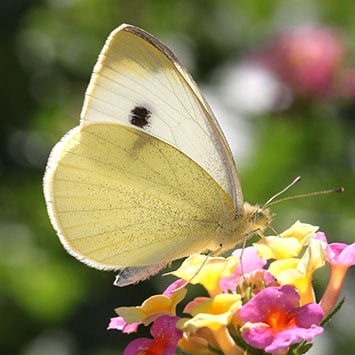Florida’s Most Wanted | Miami
These invaders are on the loose, and multiplying.
South Florida is under attack. From green iguanas in Miami to Argentine black and white tegus in Homestead to Burmese pythons in the Everglades, invasive reptiles from Asia and South America are wreaking havoc on the region’s ecosystems.
Experts say that a number of causes are to blame for these non-native reptile outbreaks, with careless pet owners and the exotic pet trade at the top of the list.
“People buy these tiny little lizards and when they grow up, they don’t want them anymore, so they incorrectly and illegally release them,” said Natural Selections of South Florida President and conservation biologist Joe Wasilewski. “So they think they’re doing the animal a favor, when they’re harming not only it, but the environment. It’s a story that’s repeated over and over here in South Florida.”
Green iguanas are native to Central and South America, but they have made themselves right at home in Florida, from Key West all the way up to Palm Beach. Wasilewski calls the iguanas the “green plague.” Aside from being a common backyard nuisance, iguanas are eating native vegetation, damaging municipal infrastructure, and even threatening airline safety.

“I have been stopped by planes at Fort Lauderdale Airport because iguanas were on the runway,” Wasilewski said. “You hit a 20-pound iguana in a small plane, you’re talking a potential disaster.”
Wasilewski removes green iguanas along with other reptile species that dine on Florida’s native flora and fauna, including Argentine black and white tegus.

Native to parts of South America, tegus can grow up to 4 feet long. And although these large intelligent lizards can be kept as pets, tegus should be approached with caution in the wild.
“Tegus have huge, powerful jaws and teeth,” Wasilewski said. “You do not want to get bitten by this thing. I would rather get bitten by an alligator.”
According to Wasilewski, Argentine black and white tegus were first noticed by South Floridians at trailer parks.
“They’re more of an urban animal,” Wasilewski explained. “They go into people’s yards, and if you leave food out for your dog or cat, they’ll actually eat it out of the bowl. A trailer park is a perfect habitat, and there’s skirting under the trailer where they can hide. We’ve been chasing them around trailer parks for years.”
Wasilewski scatters traps throughout Miami-Dade County using store-bought eggs as bait. The tegu’s egg-eating diet is already wreaking havoc on South Florida’s nesting birds, turtles, and alligators, and biologists fear that federally protected American crocodiles could be the next victims.
“This is an eating machine, and we need to catch the tegus before they get into the crocodile nests,” Wasilewski warned. “We know that they’re eating eggs from alligator nests in the Everglades, and tegus are moving east where the American crocodiles are. We’re terrified, environmentally speaking, that if they get into those nesting grounds, they can literally wipe out the population. They’ll eat the hatchlings – tegus are as big a threat in South Florida as Burmese pythons.”
The population of notorious Burmese pythons is exploding in Everglades National Park, which is particularly vulnerable to invasive species.
The pythons are devouring a range of native fauna that calls the Everglades home, including birds, raccoons, rabbits, and even white-tailed deer. A full-grown adult Burmese python can grow upwards of 15 feet. While the total number of pythons in South Florida is unknown, it is estimated that there could be hundreds of thousands of these invasive predators roaming free in the Everglades.

To combat the ever-growing Burmese python population, the South Florida Water Management District hires independent contractors to hunt the species through its Python Elimination Program. Since the program’s launch in 2017, more than 1,000 pythons have been removed.
“It was a brilliant, brave idea – and it’s wildly successful,” said python hunter and Swamp Apes Founder Tom Rahill. “The python problem is not something that’s going to be eliminated; it’s got to be managed. And that’s exactly what we’re doing, managing the population. Hopefully we can get them down enough so that the native populations that are preyed upon by the pythons have a chance to recover.”
Aside from management, Joe Wasilewski emphasized responsible pet ownership as a key component in the fight against invasive species in South Florida.
“I am totally for keeping pets, but I am totally against releasing any non-native reptile into the wild,” Wasilewski said. “And it’s against the law in Florida to release any non-indigenous species.
— Sean Keenehan





